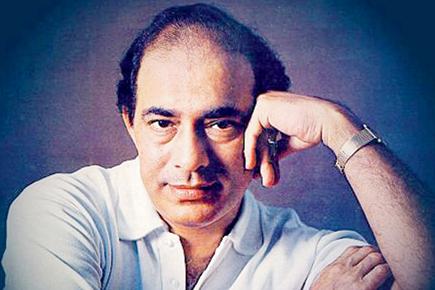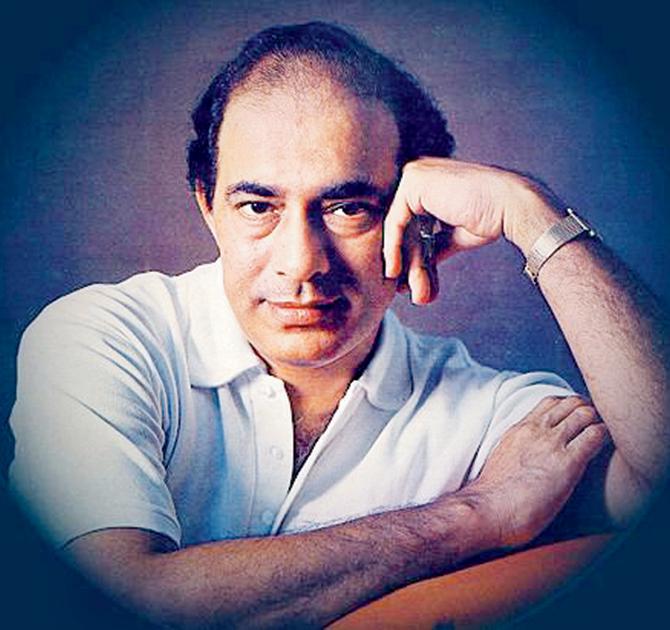Ghazal-maestro Talat Mehmood died on 9th May 1998. The multitudes of his fans will shed quite a few tears on his 17th death anniversary.

Talat Mehmood
"Meri yaad mein tum na aansoo bahana, na ji ko jalana, mujhe bhul jana...", was one of Talat Mehmood’s most unforgettable songs rendered way back in 1951. Thereafter for nearly two decades, Talat sang one hit ghazal after another and continued to mesmerize the legions of ghazal aficionados both in India and abroad. Even today 64 years later, their musicality and lyricism continue to haunt three generations of his loyal fans for whom Talat was truly a legend.
ADVERTISEMENT

Talat Mehmood
To begin with, however, it was not all that hunky dory for Talat as he had had to contend with some strong competition from the likes of Mohammad Rafi, Kishore Kumar, Mukesh and Manna Dey who with their varied styles had attracted the attention of music composers, song writers and the fans alike. Also, not so infrequent changes in the popular taste in the ephemeral world of music also helped his peers to create their own individual niche. It was thus much creditable for Talat to have been able to hold his own as the 'King of Ghazals' in the face of such fierce a competition and to remain the first-choice playback singer in this genre both of the music composers and the lyricists.
Like many of his contemporaries, Talat too had had his share of good luck. It had taken him little time, in the early 1940s, to establish himself as a ghazal singer of no mean merit in his hometown of Lucknow with the All India Radio becoming his launching pad. His first disc by HMV in 1941, "Sab din ek samaan nahin tha" was hailed as a success. However, it was his next "Tasveer teri dil mera behela na sakegi…" written by Faiyyaz Hashmi that turned out to be a chartbuster and had brought him much accolade and national fame. Talat was then just 16.
Calcutta - then the hub of both Hindi and Bengali movies - was his next destination. With Tapan Kumar as his pseudonym, Talat recorded numerous songs in Bengali that had then become a rage. With his good looks, he also starred in three successful Bengali movies that attracted many fans among the beautiful women. One such fan was a former child star, Latika Mullick, whom he later married. In Calcutta, Talat worked with the New Theatres, then a top production company, and when it fell into bad days, he moved to Bombay to make his fortune there.
Bombay, however, was not so easy going; there Talat saw one music director after another but they disapproved of the ‘quivering note’ or ‘kampan’ that characterised his voice. Though disappointed, Talat continued his rounds of music composers. His perseverance eventually paid off when he found an admiring mentor in Anil Biswas - the then doyen of music composers in Bombay.
Ironically, the very ‘kampan’ or ‘vibrato’ in Talat’s voice that other music directors considered a flaw fascinated Biswas to no end. "Even though Anil da had by then completed the music of Arzoo, even then he persuaded the director to add another song to the movie," says Amit Biswas, the late maestro’s son. That song "Aye Dil mujhe aisi jagha le chal jahan koi na ho…" written by Majrooh Sultanpuri and picturised on Dilip Kumar became an instant rage.
Fortuitously, the Bombay moviedom had then become a Mecca for romantic lyricists and poets of all kind including Sahir Ludhyanvi, Majrooh Sultanpuri, Hasrat Jaipuri, Shakeel Badayuni, Raja Mehdi Ali Khan, Kaifi Azmi, just to name a few. Their lyrics struck a chord with the listener and brought tears to their eyes when rendered in impeccable Urdu diction by Talat in his melodious voice. No wonder then that some of these poets wrote specific lyrics to be rendered by Talat alone. Such was the magic that this Lucknow boy had cast at that time.
Likewise, the Bombay movie industry then also boasted of quite a few versatile music composers headed by Anil Biswas. Others in that galaxy were Shanker Jaikishan, SD Burman, Madan Mohan, Naushad, OP Nayyar, Vasant Desai, C Ramchander, Salil Choudhury etc. Thus the ghazals and geets penned by Sahir Ludhyanvi, Shakeel Badayuni and their like and set to tune by Anil Biswas or SD Burman or Naushad or any of their peers was pure magic. These songs were instantly lapped up by music buffs and became chartbusters.
In a way Talat’s first song "Aye Dil mujhe.." in 1949 had become the harbinger of the ghazal craze in the country, making Talat a heartthrob of the ghazal lovers. Some of his other popular songs were "Shaam e gham ki kasam.." (Footpath 1953), "Jayen to jayen kahan…" (Taxi Driver 1954), "Main dil hoon ek armaan bhara.." (Anhonee 1952), "Hain sabse madhur woh geet.." (Patita 1953), "Itna na mujhse tu pyar badha.." and "Aansoo samajh ke.." (Chhaya 1961) are virtually timeless. These are just a handful of his more popular ghazals and geets; there are many, many more that are still very much in demand at musical functions and soirees 17 years after his death.
What further lent a sense of poignancy to many of Talat’s songs was their sensitive picturisation? "Jalte hain jiske liye.." (Sujata 1959), written by Majrooh Sultanpuri and set to music by SD Burman, is just one example. The picturisation of the song by director Bimal Roy on Sunil Dutt and Nutan was so tenderly done that it tugged at the heartstrings of those who were then fortunate to view this movie. Another song "Mitwa Lagee Re Yeh Kaisee Anbujh Aag" in the iconic film "Devdas" directed by Bimal Roy was picturised on Dilip Kumar with equal sensitivity. Even today the "Mitwa..." song will hypnotise the listener on Youtube.
For the record, let it be mentioned that Talat had over his illustrious career sung 747 songs in 12 Indian languages. He also had the distinction of having sung duets with all the top female playback singers of that time. It would, however, appear that acting was not a strong point with Talat, and despite starring in 13 Hindi movies, he remained unsatiated with this part of his career. In a private conversation in 1985 with Aloke Lal, an ardent fan of his and no mean singer himself, "Janab, kya aap us ghalati ko bhool nahin sakte? Hum bhi khatawar hai; kaun hai jiski khwahish nahin hai ki woh bhi Dilip Kumar bane?." (Sir, who wouldn’t dream of becoming a Dilip Kumar. Why can’t you forget that mistake of mine to which I also plead guilty?).
 Subscribe today by clicking the link and stay updated with the latest news!" Click here!
Subscribe today by clicking the link and stay updated with the latest news!" Click here!






